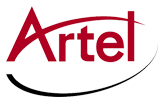
Its design must be future-proofed for a constantly changing array of digital functions — from 4K and HD television production to in-house digital video displays to large elaborate signage and scoreboards.
In addition, the need to maintain and improve synchronization among end points, devices, and processes across a broadcasters’ network is critical. This is of most importance in live sports broadcast productions. Precision Timing Protocol (PTP) is the backbone of an IP live sports broadcast as it enables the integration of audio and video in the time and phase domain, allowing for effective media processing. By leveraging the networking flexibilities of IP and combining it with a sound implementation of PTP, sports broadcasters could cost effectively introduce novel workflows, resulting in an improved and unique viewer experience. In addition, it allows for leveraging the efficiencies of media essence integration, remote production, and the ubiquity of IP networks to deliver live content of second and third-tier sports production.
All of this technology has made IP and fiber optic cable essential to the sports venue technical infrastructure, lowering costs and providing the long term flexibility to handle virtually any kind of digital signal from high-definition production to scoreboards, displays, security, and more.
Sports broadcasters are constantly looking to reduce costs while providing the high quality video coverage its customers require. Remote-integration (REMI) production workflows are being implemented and networks are migrating to hybrid IP/SDI or all IP networks. The flexibility of IP and the ability to centralize controls and production at the studio while reducing the costs associated with deploying large OB vehicles, improves operational and capital efficiencies while allowing broadcasters to cover more events and generate additional revenue.
Artel offers a full range of real-time multimedia delivery solutions to meet the needs of end users throughout stadiums and arenas, broadcast studios, and remote trucks. With thousands of deployments worldwide, Artel’s flagship DigiLink media transport platform is used for mission-critical primary video feeds for many of the world’s most watched sports events. Its reliable, and easy-to-deploy platform is designed to take advantage of enhanced technologies.
Our InfinityLink broadcast media transport solution is a modular platform providing an integrated and flexible system designed for broadcast-quality applications. Flexible and reliable, InfinityLink enables end users to design and deploy systems from the stadium or arena to a remote site or network operations center.
Designed and engineered by broadcast engineers, FiberLink delivers robust performance without breaking the budget. Its small form factor and plug-and-play capabilities are ideal for professional AV applications including broadcast, sports arenas and stadiums, remote trucks, and more.
Find the right product for next media transport project using our Product Selector. For additional information, email us at sales@artel.com.
